You have a favorite brand, right? Everybody has one!
Have you ever given thought to – why you like THIS brand?
Why do you always buy product X from brand Y?
For example, Why do Apple fans stick to Apple products?
It is because of its design aesthetics and proprietary software + hardware combination that delivers a great user experience.
That’s why the final objective of any great product or service is to help the customer get things done. And what makes it remarkable is how easy it was for the customer or how much effort was required to use that product or service.
Customer Effort Score is a metric that measures the ability of a product/service to do that.
How much effort should customers put in to get things done?
This is the underlying question that CES aspires to answer.
What is a Customer Effort Score?
Customer Effort Score (CES) is a customer service metric that measures how much effort a customer has to put in to use your product or service, interact with you, get an issue resolved, or a question answered.
The standard question that is usually used to determine customer effort score is

The objective of this exercise is to determine whether the customers are able to do what they want to do easily, with moderate difficulty, or with extreme difficulty.
But a CES question is not enough. It will tell you how easy the customer’s experience is but it doesn’t offer the ‘Why’.
For example, it wasn’t easy to use Amazon’s customer service. But why? Was the agent rude or didn’t know the answers? Was it difficult to reach out to the agent? Was the waiting time too long?
To know the answers to these questions, always add a follow-up question to your CES question.
→ What is the primary reason for your score?
This simple yet efficient question gives you the reason behind the customer’s feedback. And based on the feedback received, further improvements can be made to the product to make it more customer-friendly.
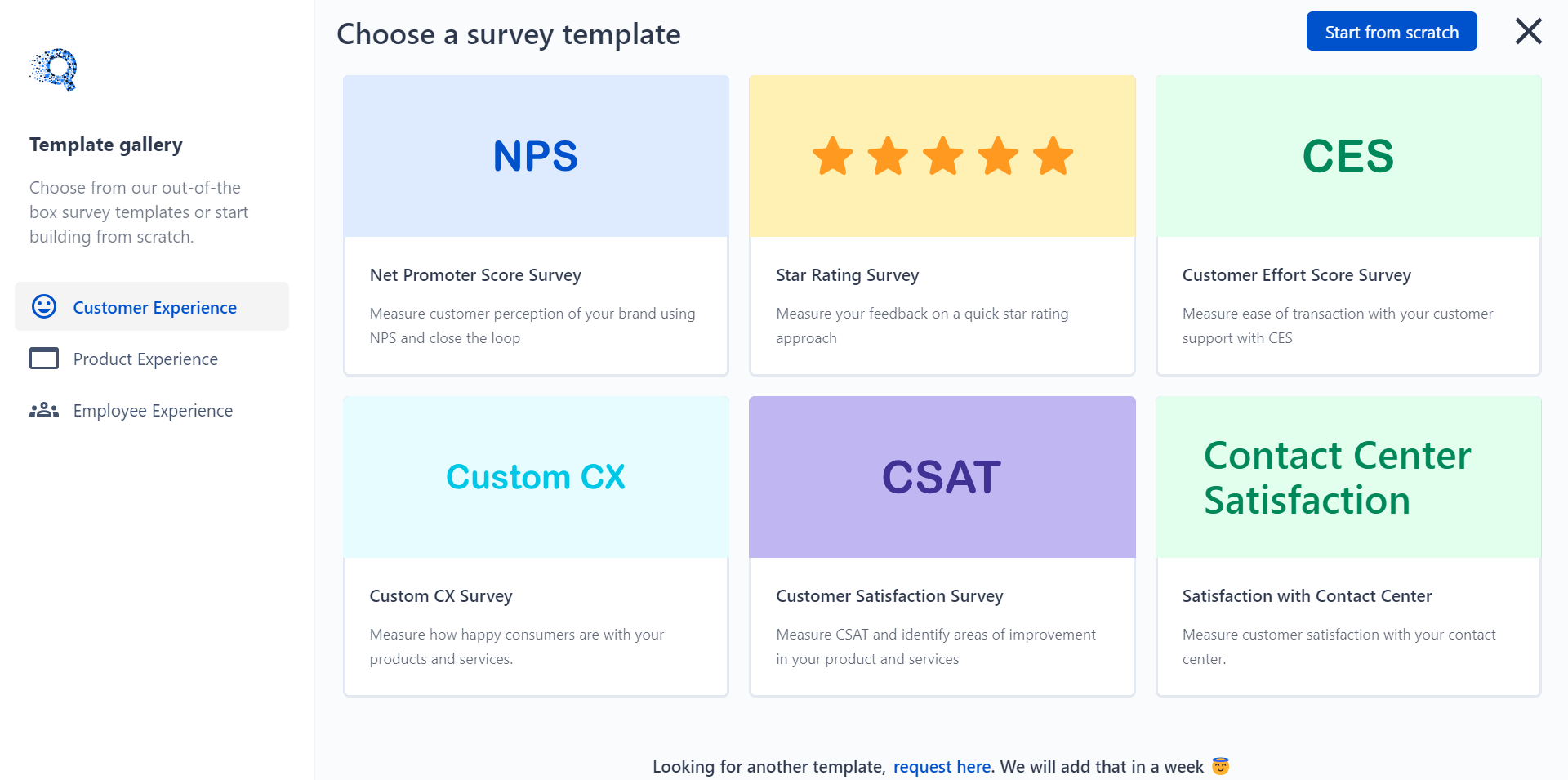
But, isn’t that what most survey systems and metrics attempt to do? What does CES do differently?
A decade ago, Harvard Business Review did a three-year-long survey of 75,000 B2C and B2B customers and their interactions with businesses through non-face-to-face channels. Two major findings emerged from the survey.
- Customer delight doesn’t build loyalty
- Reducing customer effort does
This led to the creation of the Customer Effort Score as a metric.
Compared to other key metrics like the Customer Satisfaction Score and Net Promoter Score, the Customer Effort Score is a strong driver of customer loyalty.
There are some more benefits of the Customer Effort Score. Let’s talk about it.
Why should you measure the Customer Effort Score?
According to Andrew Schumacher of Gartner, “Customer effort is 40% more accurate at predicting customer loyalty as opposed to customer satisfaction.”
CES influences the
- Customer’s relationship with the brand
- Spending amount of the customer
- Customer’s word of mouth
Here’s how.
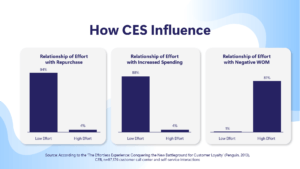
Compared to other customer feedback collection mechanisms like NPS, CSAT, or CES offers a lot of information on customer understanding with better accuracy that can improve your product or service. Here are some points that highlight why is customer effort score important:
1. Identifies disappointed customers
A CES survey helps you quickly figure out the disappointed customers who are at risk of switching loyalty to a competitor.
As a thumb rule, customers who have responded that the product or service was difficult or very difficult to use exhibit the possibility of churning.
If the CES survey was sent at the initial stages of the customer lifecycle, then the risk is higher.
2. Enables quicker surveys
Most survey mechanisms like Net Promoter Score (NPS) or Customer Satisfaction Survey (CSAT) require a long span of time before the surveys can be sent out.
However, with CES, it is possible to send dynamic surveys, even after the first interaction with the customer. CES survey can be used to measure the level of effort that a customer has to put in, in multiple instances.
Also, customer judgment based on a single interaction also makes it free of any prejudice or biases.
3. Helps eliminate redundancies
What if your checkout process is longer than usual? Or your app asks for too much information?
Does the customer have to type more characters when a simple tap can save the effort?
Your product or service might have several redundancies or futile screens in between that may not come to notice at the development stage.
A CES survey helps you narrow down these redundancies in the current system that customers are not happy with, so you can take corrective actions.
4. Improves product features
Your product could be doing well. But, can it do better? Customer Effort Score helps you answer this question.
Based on the survey responses from customers, you can easily figure out existing workflows or processes that can be rewired to make it less effortless for customers.
It makes you think about whether there is a better way for the customer to perform a task with minimal effort.
Launch Your First CES Survey!
Now there are many advantages of the CES, but it comes with its drawbacks.
The downsides of Customer Effort Score
On one hand, while CES helps make things easier for the customer, from a business standpoint, there is a downside to it as well.
CES doesn’t offer a full picture
To begin with, CES does not indicate the customer’s overall relationship with the business.
Is the customer a first-time user interacting with the business for the first time? Or is it a loyal customer who knows the processes but still finds it to be at fault? This context can tilt the scale in favor of the business or against it.
Now that you know the pros and cons of the customer effort score, it’s time to understand when you should use CES.
When to use Customer Effort Score?
There has been a great deal of confusion about when to use which survey – NPS, CES, and CSAT. So let’s discuss each one and its uses.
Customer Effort Score
CES basically helps you identify how much time and effort is required by the customer to get an issue resolved, complete a task, product purchase/return, or get answered.
So, ideally, a CES question should be asked whenever an interaction is initiated by the customer.
For example,
- Post a purchase or subscription
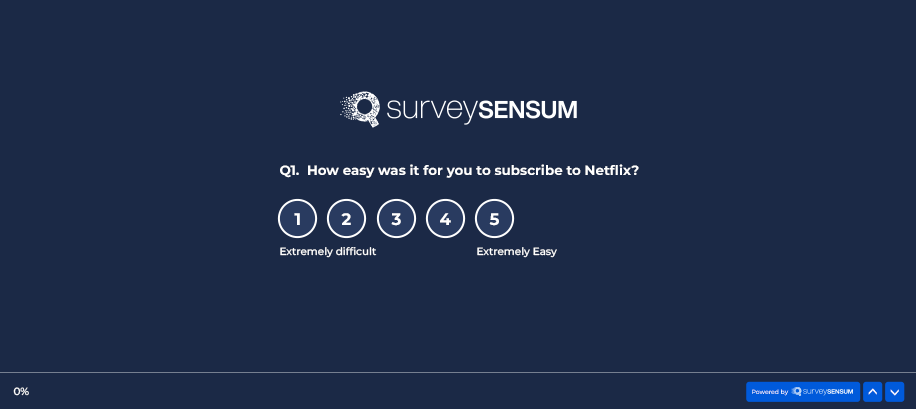
- While closing on a customer complaint or any service-related interaction
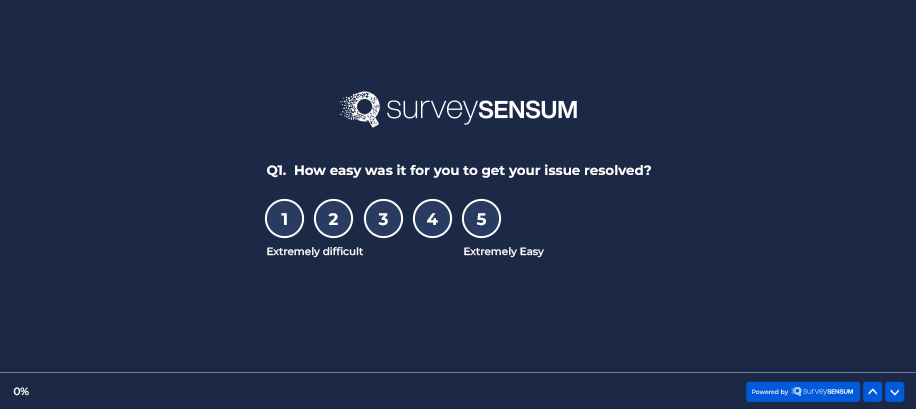
- After a user completes the onboarding on your product
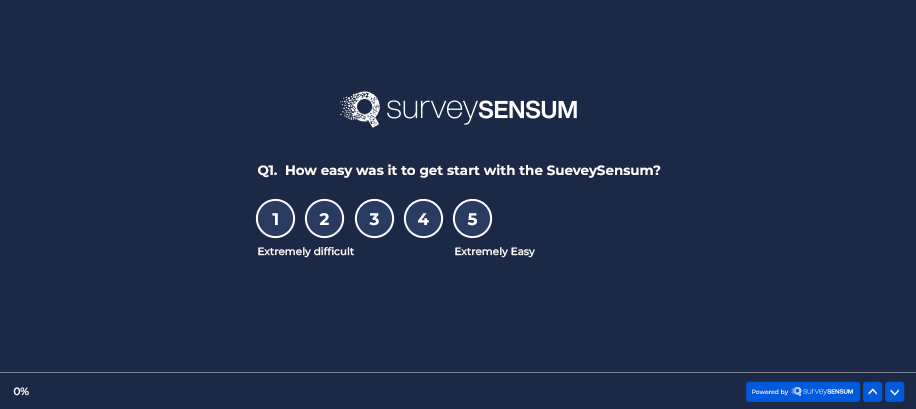
CES surveys are generally sent immediately after the interaction with the customer but in B2B SaaS, the CES survey is sent 14 to 30 after the signup on the platform to gauge the onboarding experience.
Net Promoter Score
Since CES doesn’t give a full picture of the relationship of the customer with the brand, that’s where NPS helps. For example, a loyal customer may have a disappointing experience with the new feature, but CES doesn’t tell you that the customer is loyal.
So, always use NPS to understand customers’ relationship with the brand. While CES is used to measure a single touchpoint, NPS measures the long-term loyalty of the customer to the brand.
Always ask NPS questions at regular intervals to gauge customer loyalty and drive actions to reduce customer churn.
Customer Satisfaction
Like CES, Customer Satisfaction gauges the short-term happiness of the customer. While CES focuses on the easiness of the recent interaction, CSAT on the other hand measures the satisfaction level of the customer of that interaction.
It can basically be asked anywhere after a service is provided by the organization and the customer is at the receiving end.
For example, after taking an Uber ride or using a new feature in a SaaS product, a satisfaction survey is shared to gauge your level of satisfaction with the experience or after you use
Types of questions in a CES survey
A CES survey can be carried out in several ways. Although the basic question involved remains the same, the responses can be gathered in several forms.
Some common CES survey questions are described below.
1. Numbered scale
Numbered Scale questions are the most common type of CES survey question where customers are requested to respond to the ease of the transaction/product/service using a number response.
It could be 1 to 5, 1 to 7, or any other numbered scale where the composition of higher scores indicates positive CES.
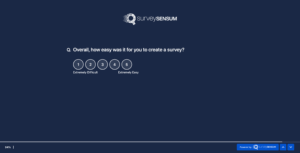
2. Likert scale
The Likert scale aims to seek feedback from customers through opinions. They are similar to research questionnaires where customers respond to the ease of the transaction/product/service by choosing one from the multiple options shared on the scale.
Here’s an example of a CES survey on a Likert Scale.

Now that the CES survey is created and launched, and the responses start pouring in, it’s time to measure the customer effort score.
How to measure your Customer Effort Score?
Customer effort score measurement begins with one question
→ On a scale of 1 to 5, how much effort did you have to put forth to handle your issue?
And the customers are required to respond to the question with the following options:
1 = Very low effort
2 = Low effort
3 = Neutral
4 = High effort
5 = Very high effort
Once the survey is completed, the CES is derived by dividing the sum of all individual customer effort scores by the total number of customers who responded.
Customer effort score formula: (Total sum of individual CES) ÷ (Number of customer responses)
The resultant figure would be a score between 1 and 5 and a higher rating means the transactions were easy.

Alternatively, the CES score can also be measured using text responses. Similarly, the question can also be rephrased as,
→ How easy did we make it for you to handle your issue today?
1. Easy
2. Neither
3. Difficult
This is typically useful for service-based businesses that have numerous customer interactions.
In this case, the CES score would be derived by deducting the composition of customers who replied ‘Easy’ compared to customers who provided the other two responses. And the resultant score can be calculated with the CES calculation formula.
Measure CES With CES Surveys!
Now that you know your Customer Effort Score, is it good or bad?
To know that, first we need to understand what a good Customer Effort Score is.
What is a good Customer Effort Score?
There is no industry benchmark for Customer Effort Score. A higher score is always considered to be better. It indicates that the business is successful in rendering a positive customer experience or that its workflows are effortless for customers to use.
Ideally, a business should have a CES that is higher than the mean. For example, on a scale of 5, the average score should be more than 4.3 or the top box should be more than 70%.
But where you are taking this survey also impacts the CES score. For example, if you launch a CES survey in Indonesia, consumers are more generous and give a 5 score easily. So the brands usually have higher CES. However, in some countries in Europe, consumers are very critical of the CES, so having a 4 score on the CES survey is a great deal there.
So, always benchmark your CES score from the last quarter’s average and improve on that.
A low score exhibits inherent roadblocks in the customer journey of the product or service that should be remedied at the earliest.
In the case of such respondents, it would be ideal to close the customer feedback loop, gather information as to what displeases them about a product or service, and resolve their issues. Otherwise, in the long run, it will lead to customer churn or even a negative brand image.
How to improve Customer Effort Score?
There is no silver bullet that can improve the Customer Effort Score. However, there are a couple of measures that can push the needle of your CES.
Here are 4 of them:
1. Know your customer expectations
Customers buy a product or service because they expect it to solve a particular problem or challenge of theirs. So, to achieve a higher CES, understand their problems and challenges and focus on resolving them.
If the business is able to predict customers’ wants and fine-tune its offerings accordingly, it will reduce customer effort resulting in higher CES.
2. Set up self-service portals
Every time a customer tries to use a product or service for the first time, they might stumble into situations where they need someone to help them out.
Calling customer support or engaging in a live chat with a chatbot can be quite strenuous. If there are self-service portals like IVR menus, FAQ sections, or even a community where the queries are solved instantly. A self-service customer portal will ensure that your customers have quick and convenient access to information and support, reducing the need for direct interaction with your customer service team.
Customers will feel more productive at solving their own problems. This, in turn, can improve the CES score.
3. Redesign workflows
Reassess your current workflow. How many steps should a customer perform before their objective is met?
For example, in a mobile app, how many clicks or gestures should the app user perform before they can complete an action or find information. Zero in on the steps that can be eliminated to make the process effortless for customers.
4. Make use of the customer feedback
This might seem like a no-brainer. In a CES survey, the questions you should be asking from the customers should deliver you more information about the customers’ problems.
The usual ‘How will you rate our product/service?’ may not yield the necessary input. Tweak the CES survey follow-up questions in such a way that customers are persuaded to share pain areas in the current process. And make use of that qualitative feedback. Dig deep and you’ll find the common issues and customers’ sentiments towards that touchpoint.
Conclusion: So, how much effort do your customers put in?
When it comes to customers and business relationships, as said before — Effort is the strongest driver to customer loyalty.
It is not a customer delight. It is not a premium feature. It is not a freebie. It is the ability of a product or service to help a customer get things done that make it successful.
CES helps measure if your product or service is good at that. It asks customers how much effort they have to exert to get something done. If it is too much effort, it is time to rethink your product or service. If your business manages to steer around the product, service, or workflows, it will lead to greater customer success and augmented customer loyalty.
After all, isn’t that what every business strives for?
Frequently Asked Questions on CES
What is a good CES score?
Customer Effort Score is computed on a scale of 1 to 7, from very difficult to very easy. The higher your CES score, the better it is. Essentially, a business should have a CES that is higher than the mean.
Suppose you’ve chosen a 5-point Likert scale for a CES survey, then the score should be more than 2.5.
What is the customer effort level?
Customer effort level directly implies the level of effort a customer puts in to find solutions to their problem, complete a purchase process, contact customer support, etc. If it all goes well and easy via simple methods, the customer effort level is simplified.
What is an effort score?
A customer effort score is a metric used to gauge the effort a customer makes in contacting your business, getting support, or resolving an issue. It is a factor that determines customer churn and loyalty levels.
How is the CES calculated?
The Customer Effort Score can be calculated by dividing the sum of all responses by the total number of responses.
Customer Effort Score: (Total sum of individual CES) ÷ (Number of customer responses)






![What is Customer Effort Score [CES]: Beginner’s Guide](https://surveysensum.com/wp-content/uploads/2024/01/What-is-Customer-Effort-Score-Beginners-Guide.png)
